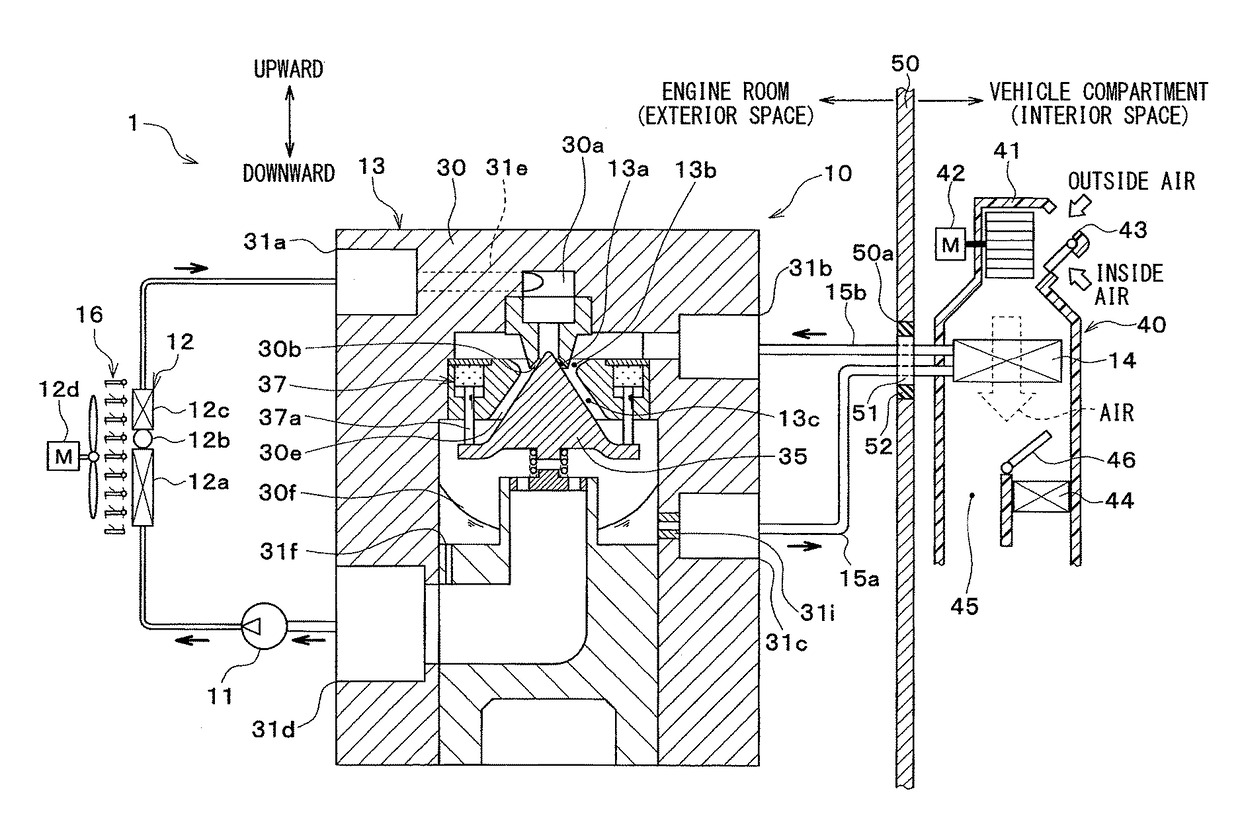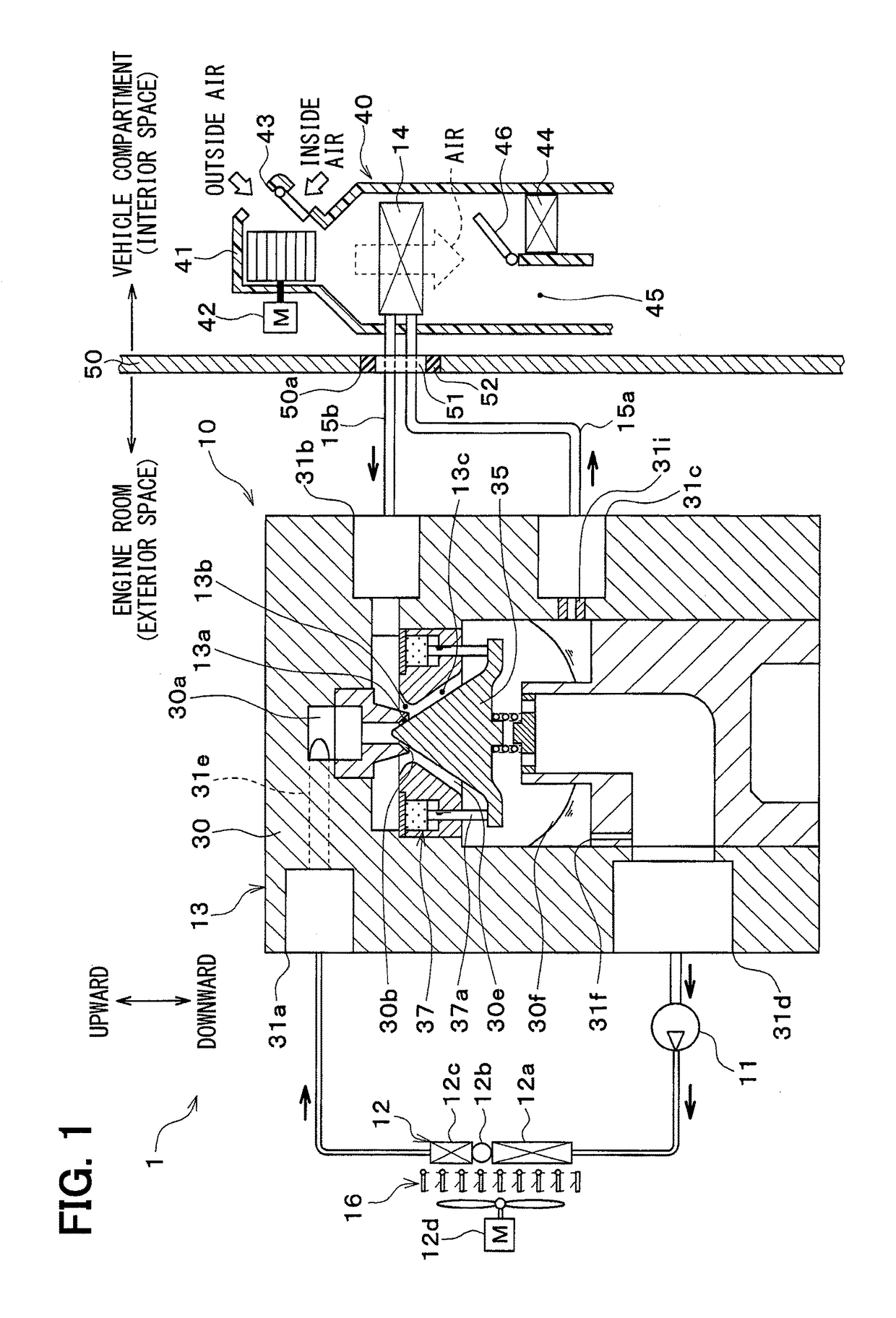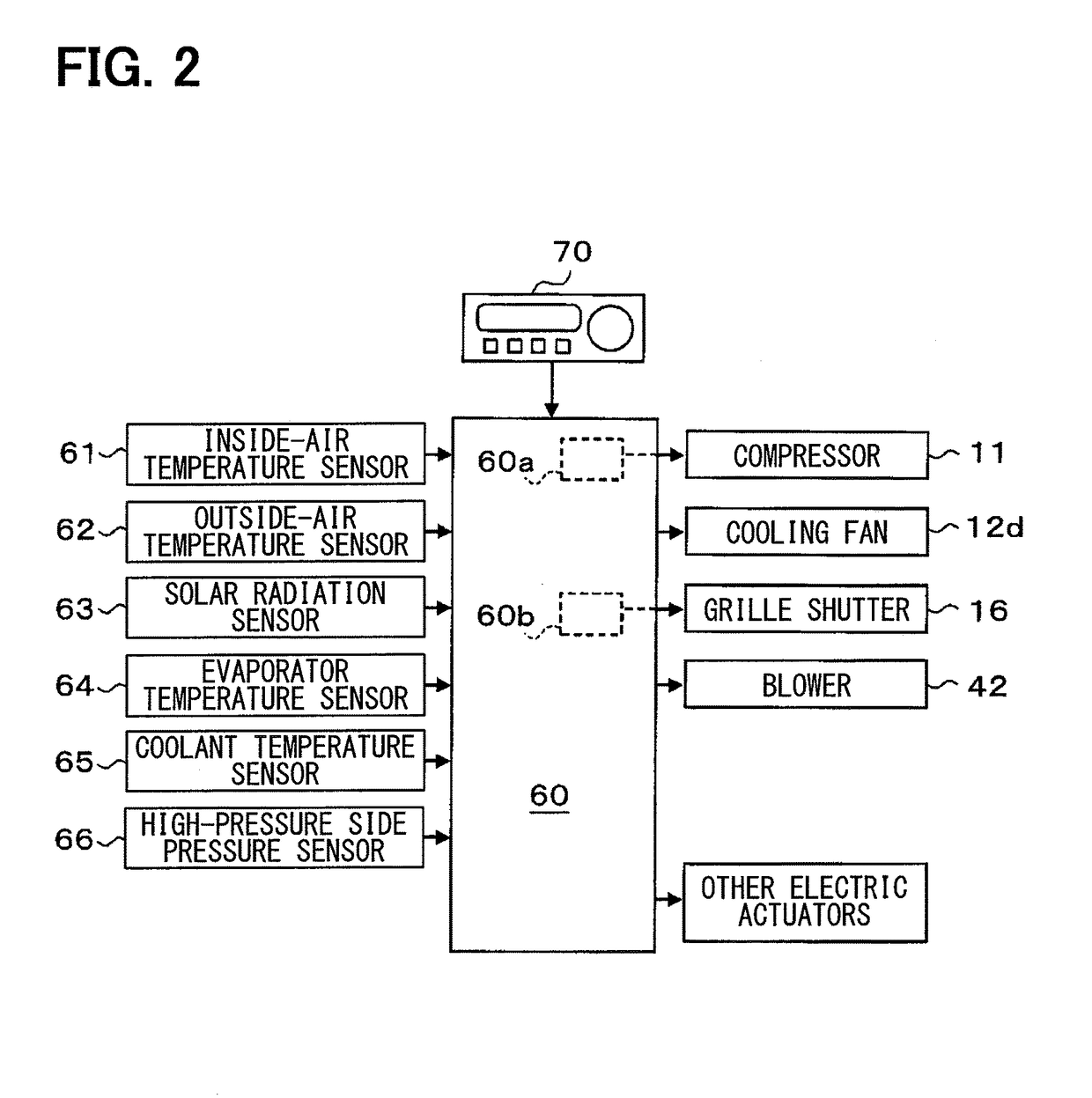Ejector refrigeration cycle device
- Summary
- Abstract
- Description
- Claims
- Application Information
AI Technical Summary
Benefits of technology
Problems solved by technology
Method used
Image
Examples
first embodiment
[0032]A first embodiment of the present disclosure will be described below with reference to FIGS. 1 to 6. As shown in the entire configuration diagram of FIG. 1, an ejector refrigeration cycle device 10 in this embodiment is applied to a vehicle air conditioner 1 and serves to cool ventilation air to be blown into a vehicle interior as a space to be air-conditioned (interior space). Thus, a fluid to be cooled by the ejector refrigeration cycle device 10 is the ventilation air.
[0033]The ejector refrigeration cycle device 10 forms a subcritical refrigeration cycle in which a high-pressure side refrigerant pressure does not exceed the critical pressure of the refrigerant, using a hydrofluorocarbon (HFC)-based refrigerant (e.g., R134a) as the refrigerant. Obviously, a hydrofluoroolefin (HFO)-based refrigerant (e.g., R1234yf) or the like may also be adopted as the refrigerant. Further, refrigerating machine oil for lubricating a compressor 11 is mixed into the refrigerant, and part of t...
second embodiment
[0140]In this embodiment, as shown in the entire configuration diagram of FIG. 7, the grille shutter 16 is abolished, while a bypass passage 17a and an on / off valve 17b are provided by way of example, compared to the first embodiment. The bypass passage 17a serves to cause the high-pressure refrigerant discharged from the compressor 11 to bypass the radiator 12 and then to guide the refrigerant to the refrigerant inflow port 31a side of the ejector module 13. The on / off valve 17b serves to open and close the bypass passage 17a.
[0141]In more detail, when the on / off valve 17b opens the bypass passage 17a, the ejector refrigeration cycle device 10 in this embodiment can guide the high-pressure gas-phase refrigerant discharged from the compressor 11 to the downstream side of the radiator 12 as indicated by a dashed arrow in FIG. 7. Then, the high-pressure gas-phase refrigerant is mixed into the supercooled liquid-phase refrigerant flowing out of the radiator 12, which can increase the ...
PUM
 Login to View More
Login to View More Abstract
Description
Claims
Application Information
 Login to View More
Login to View More - R&D
- Intellectual Property
- Life Sciences
- Materials
- Tech Scout
- Unparalleled Data Quality
- Higher Quality Content
- 60% Fewer Hallucinations
Browse by: Latest US Patents, China's latest patents, Technical Efficacy Thesaurus, Application Domain, Technology Topic, Popular Technical Reports.
© 2025 PatSnap. All rights reserved.Legal|Privacy policy|Modern Slavery Act Transparency Statement|Sitemap|About US| Contact US: help@patsnap.com



